Related Research Articles
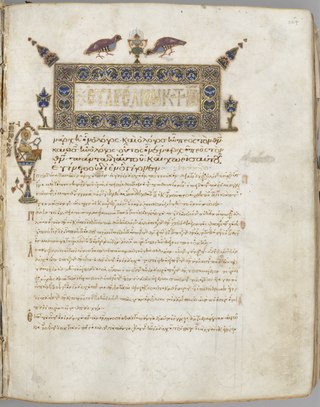
An illuminated manuscript is a formally prepared document where the text is often supplemented with flourishes such as borders and miniature illustrations. Often used in the Roman Catholic Church for prayers, liturgical services and psalms, the practice continued into secular texts from the 13th century onward and typically include proclamations, enrolled bills, laws, charters, inventories and deeds.

A psaltery is a fretboard-less box zither and is considered the archetype of the zither and dulcimer; the harp, virginal, harpsichord and clavichord were also inspired by it. Its resonance box is usually trapezoidal, rectangular or in the form of a "pig's head" and often richly decorated.
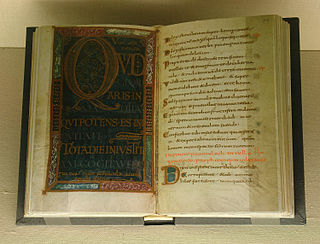
A psalter is a volume containing the Book of Psalms, often with other devotional material bound in as well, such as a liturgical calendar and litany of the Saints. Until the emergence of the book of hours in the Late Middle Ages, psalters were the books most widely owned by wealthy lay persons. They were commonly used for learning to read. Many Psalters were richly illuminated, and they include some of the most spectacular surviving examples of medieval book art.

The Vespasian Psalter is an Anglo-Saxon illuminated psalter decorated in a partly Insular style produced in the second or third quarter of the 8th century. It contains an interlinear gloss in Old English which is the oldest extant English translation of any portion of the Bible. It was produced in southern England, perhaps in St. Augustine's Abbey or Christ Church, Canterbury or Minster-in-Thanet, and is the earliest illuminated manuscript produced in "Southumbria" to survive.

A drollerie, often also called a grotesque, is a small decorative image in the margin of an illuminated manuscript, most popular from about 1250 through the 15th century, though found earlier and later. The most common types of drollery images appear as mixed creatures, either between different animals, or between animals and human beings, or even between animals and plants or inorganic things. Examples include cocks with human heads, dogs carrying human masks, archers winding out of a fish's mouth, bird-like dragons with an elephant's head on the back. Often they have a thematic connection with the subject of the text of the page, and larger miniatures, and they usually form part of a wider scheme of decorated margins, though some are effectively doodles added later. The word comes from the French drôlerie, meaning a joke.

The Egbert Psalter is a medieval illuminated manuscript Psalter preserved in the municipal museum of Cividale, Italy. The psalter is an example of the illuminated manuscripts associated with the Ottonian Renaissance.
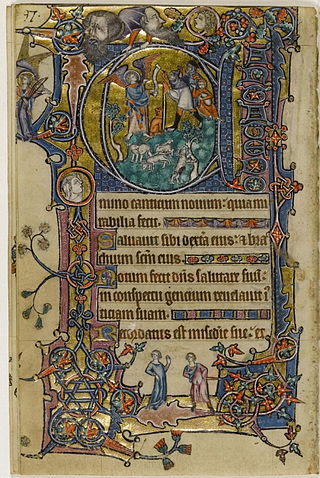
The Macclesfield Psalter is a lavishly illuminated manuscript probably produced c. 1320–30 in East Anglia. The psalter, or book of Psalms, contains 252 beautifully illustrated pages and is named after its most recent owner, the Earl of Macclesfield.

The Luttrell Psalter is an illuminated psalter commissioned by Sir Geoffrey Luttrell (1276–1345), lord of the manor of Irnham in Lincolnshire, written and illustrated on parchment circa 1320–1340 in England by anonymous scribes and artists.
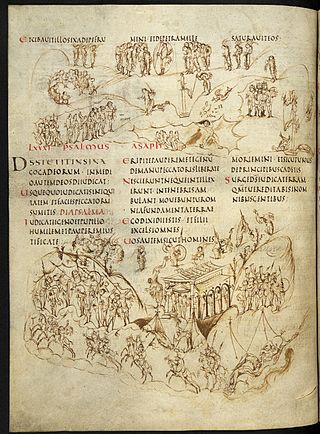
The Utrecht Psalter is a ninth-century illuminated psalter which is a key masterpiece of Carolingian art; it is probably the most valuable manuscript in the Netherlands. It is famous for its 166 lively pen illustrations, with one accompanying each psalm and the other texts in the manuscript. The precise purpose of these illustrations, and the extent of their dependence on earlier models, have been matters of art-historical controversy. The psalter spent the period between about 1000 to 1640 in England, where it had a profound influence on Anglo-Saxon art, giving rise to what is known as the "Utrecht style". It was copied at least three times in the Middle Ages. A complete facsimile edition of the psalter was made in 1875, and another in 1984 (Graz).

William de Brailes was an English Early Gothic manuscript illuminator, presumably born in Brailes, Warwickshire. He signed two manuscripts, and apparently worked in Oxford, where he is documented from 1238 to 1252, owning property in Catte Street near the University Church of St Mary the Virgin, roughly on the site now occupied by the chapel of All Souls College, where various members of the book trade lived. He was married, to Celena, but evidently also held minor orders, as at least three self-portraits show him with a clerical tonsure. This was not unusual: by this date, and with the exception of the St. Albans monk Matthew Paris, the only other English illuminator of the period about whom we have significant personal information, most English illumination seems to have been done in commercial workshops run by laymen.

The British Library is the national library of the United Kingdom and is one of the largest libraries in the world. It is estimated to contain between 170 and 200 million items from many countries. As a legal deposit library, the British Library receives copies of all books produced in the United Kingdom and Ireland, including a significant proportion of overseas titles distributed in the UK. The Library is a non-departmental public body sponsored by the Department for Digital, Culture, Media and Sport.

The Hunterian Psalter is an illuminated manuscript of the 12th century. It was produced in England some time around 1170, and is considered a striking example of Romanesque book art. The work is part of the collection of the Glasgow University Library, cataloged as Sp Coll MS Hunter U.3.2 (229), which acquired the book in 1807. It derives its colloquial name, the "Hunterian Psalter", from having been part of the collection of 18th century Scottish anatomist and book collector William Hunter, who willed his collection to the University. It has also at times been known as the "York Psalter", owing to its supposed northern English origin in the city of York.
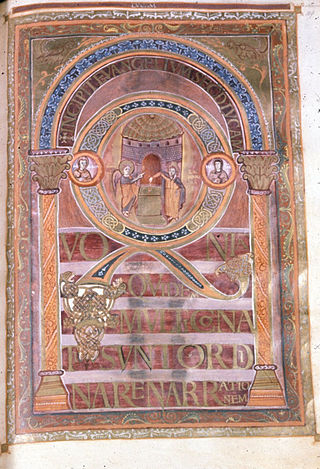
The Harleian Library, Harley Collection, Harleian Collection and other variants is one of the main "closed" collections of the British Library in London, formerly the library of the British Museum.
The Stowe Breviary is an early-fourteenth-century illuminated manuscript Breviary from England, providing the divine office according to the Sarum ordinal and calendar.
Janet Moira Backhouse was an English manuscripts curator at the British Museum, and a leading authority in the field of illuminated manuscripts.

The Queen Mary Psalter is a fourteenth-century English psalter named after Mary I of England, who gained possession of it in 1553. The psalter is noted for its beauty and the lavishness of its illustration, and has been called "one of the most extensively illustrated psalters ever produced in Western Europe" and "one of the choicest treasures of the magnificent collection of illuminated MSS. in the British Museum".

The Isabella Psalter, also called the Psalter of Queen Isabella or the Psalter of Isabella of England, is a 14th-century volume containing the Book of Psalms, named for Isabella of France, who is herself depicted in it; it was likely a gift upon her betrothal or marriage. The illuminated manuscript is also notable for its bestiary.

The Gorleston Psalter is a 14th-century manuscript notable for containing early music instruction and for its humorous marginalia. It is named for the town of Gorleston in Norfolk.

Beatus vir are the first words in the Latin Vulgate Bible of both Psalm 1 and Psalm 112. In each case, the words are used to refer to frequent and significant uses of these psalms in art, although the two psalms are prominent in different fields, art in the case of Psalm 1 and music in the case of Psalm 112. In psalter manuscripts, the initial letter B of Beatus is often rendered prominently as a Beatus initial.
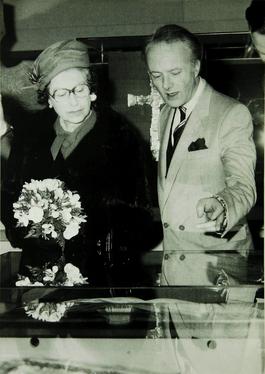
Derek Howard Turner was an English museum curator and art historian who specialised in liturgical studies and illuminated manuscripts. He worked at the British Museum and the British Library from 1956 until his death, focusing on exhibitions, scholarship, and loans.
References
- ↑ Nigel Saul, Fourteenth century England Volume 1, p 189]
- ↑ Eric George Millar, "The Luttrell Psalter and the Bedford Book of Hours" The British Museum Quarterly Vol. 4, No. 3 - Dec 1929, pp. 63-66
- 1 2 3 Panayotova, Stella (2008). The Macclesfield Psalter. Thames & Hudson. ISBN 978-0-500-23852-3.
- ↑ Fitzwilliam Museum